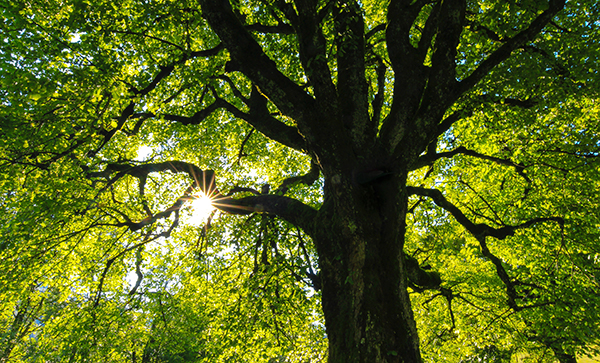News And Advice From The Leading Thousand Oaks Tree Trimming Company
If you enjoy hiking around our local trails in the Conejo Valley, you’ll notice that the ground around our beautiful oak trees is generally a wonderful carpet of organic material. Broken up leaves and twigs form a blanket over the top layer of soil. If you ever reach down to grab a handful of that material, you’ll also notice it’s loaded with organisms such as earthworms and tiny roundworms called nematodes. These organisms serve a useful purpose: they break up organic materials so that they can be absorbed back into the soil. A side effect of this activity is that the soil actually feels spongy, which is a sign that it’s perfect for absorbing rainfall and also for allowing oxygen to get to the roots.

So, what does this have to do with those beautiful trees planted in your yard? Well, if you’re like most homeowners, you probably rake away all that loose organic material surrounding their trunks. Add in the fact that trees in a suburban environment are also exposed to additional stresses and you get a key difference between healthy trees in the wild and trees in your yard: landscaped trees need extra attention while “wild” trees get their nutrition from decaying organic debris.
That’s why the trees in your yard will probably benefit from fertilization on an annual basis. The most common fertilizer for trees contains nitrogen, phosphorus and potassium. If you check out a bag of fertilizer for trees you’ll see that content of these nutrients found on the packaging as N-P-K, with 16-4-8, 12-6-6 and 12-4-8 being pretty common. An interesting side note is that while many people think of fertilizer as “food,” it is not. Plants produce the food they need in the form of sugars through photosynthesis. N-P-K merely helps provide ingredients that are needed for photosynthesis, and these ingredients are especially valuable when they’re lacking in the soil.
To fertilize correctly, you should keep a couple things in mind — specifically, it should be done in the right amount and at the right time. Before you fertilize, though, consider whether your trees need fertilizing in the first place. Are there signs of poor growth? Poorly colored leaves — pale green or yellow — along with smaller leaves, early leaf drop in autumn, minimal annual twig growth and dying branches are all signs of poor growth. Of course, other things can also cause these symptoms, such as compacted soil, insects, diseases, weeds and foul weather can all adversely affect your trees. If you rule these things out, then fertilizing is worth a try.
In terms of timing, examine your trees over the coming fall and winter to determine if the things we discussed above may be hampering healthy growth. If not, then get ready to fertilize in early spring.
When you’re shopping, keep a couple other things in mind. Avoid weed-and-feed fertilizers (usually designed for lawns) because they often have an herbicide that can harm trees. Follow directions when you’re determining how much fertilizer to apply — too much can be harmful. Consider the age of your trees; generally, younger shrubs and trees need more nitrogen than more mature trees. Do all of the above, then get ready to watch your trees thrive all year long!

